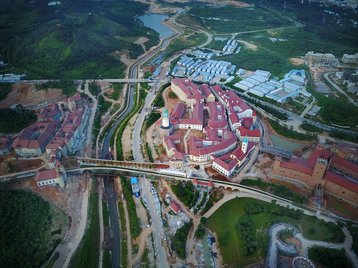Huawei is reportedly building a semiconductor equipment R&D center in Shanghai.
According to a report from Nikkei Asia, the center’s main focus will be building lithography machines, the equipment necessary to produce the most advanced 3nm and 5nm chips.
The news comes a week after it was announced that the Dutch government was planning to comply with a US request that would see ASML, the global sole supplier of extreme ultraviolet lithography (EUV) photolithography machines, banned from servicing and maintaining equipment that has been sold to Chinese customers.
Chinese companies bought 46 percent of ASML's lithography systems sold in the third quarter of 2023, generating around $3.7 billion in revenue between July and November of that year.
Citing industry executives and sources briefed on the matter, Nikkei Asia reported that Huawei is offering staff salary packages worth up to twice as much as local chipmakers and has already hired engineers who have previously worked at companies including Applied Materials, Lam Research, KLA, as well as ASML.
Huawei is also looking to hire staff with experience at TSMC, Intel, and Micron, the report said.
The R&D center will be located in the Qingpu district of west Shanghai and will share a campus with the new headquarters of Huawei’s chip design unit, HiSilicon Technologies. The report said the site will also house research centers for wireless technologies and smartphones.
Total investment in the center is thought to be around 12 billion yuan ($1.66 billion). It is expected to be twice the size of Huawei’s Ox Horn Campus in Dongguan, a site in the Guangdong Province of China that has buildings modeled on various European cities.
Huawei was banned from providing equipment to the US government under the Defense Authorization Act of 2018 due to its close links to the Chinese government. A general import ban followed shortly thereafter, with former President Donald Trump signing a law in 2020 to prevent US rural telecom carriers from using Huawei network equipment.
In September 2023, the US government opened an investigation after it was first discovered the Huawei Mate Pro 60 contained 7nm, 5G-enabled Kirin 9000S chips, made by the partly state-owned Chinese chipmaker SMIC.
The US has sought to restrict the availability of 7nm chips in China by imposing export restrictions, and SMIC was barred by the US from obtaining the machines necessary for the production of 7nm chips in late 2020. At the time the Department of Commerce started its investigation, the most advanced chip SMIC had been known to manufacture was a larger-scale 14nm semiconductor.






